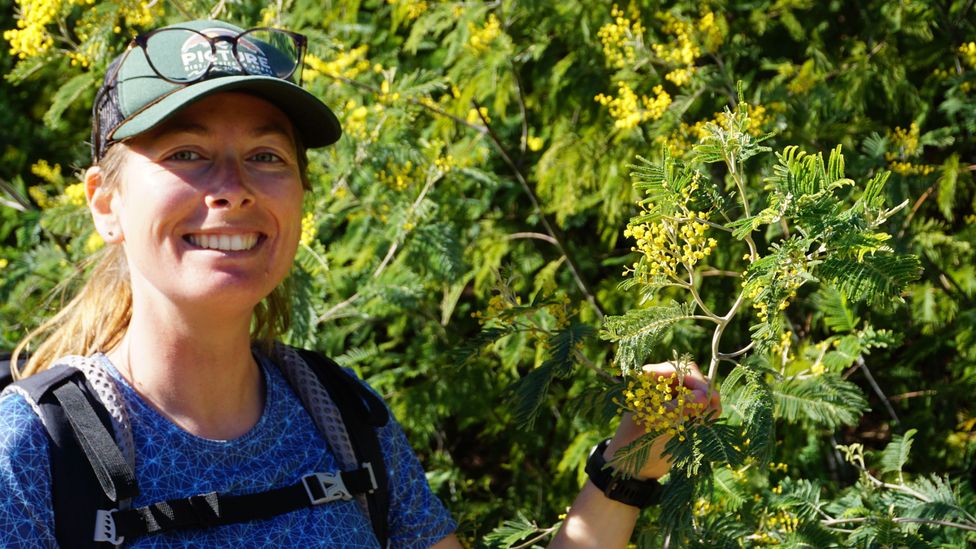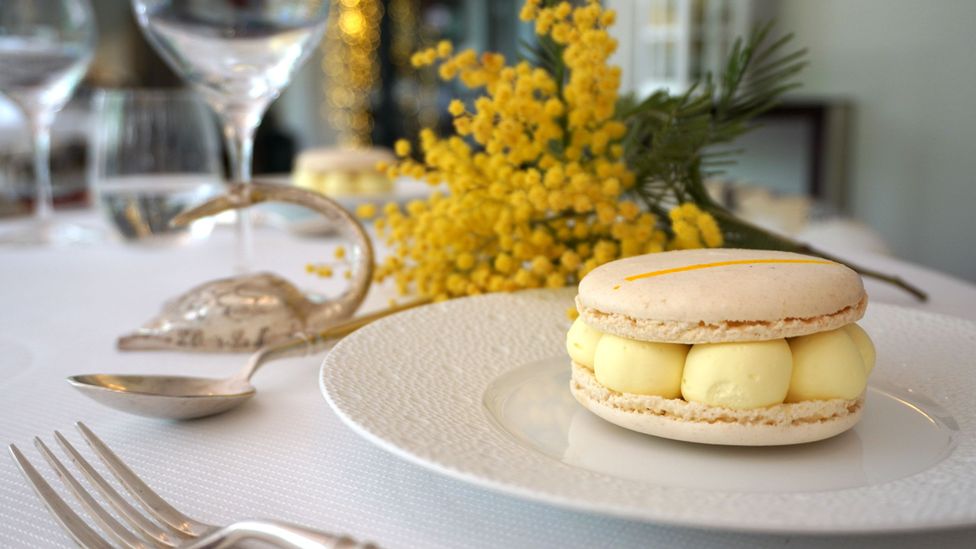France s 130km Mimosa Route
Displaying eight towns and towns, the dazzling street carries an alternate sort of daylight to the French Riviera, when the area breaks out in monster brushstrokes of rich yellow.
A
As the snow-covered pinnacles of the Maritime Alps blurred into the distance behind me, I followed my aide Maddy Polomeni further along a passage of brilliant mimosa blooms as we climbed towards a neglected quarry in the Massif de l'Esterel mountain range. In spite of the fact that it was the last option end of the blossoming season, there was as yet a wealth of sprouts along this path, dissimilar to a significant number of the other mimosa circuits higher up in the tops behind us.
The right term for each bud is glomerulus, however "pom-poms", as Polomeni calls them, felt a really fitting name for the cushy, featherlight balls that filled the late February air with the lovely fragrance of marzipan.
"I want to spring is as of now here," she said.
These rough ranges behind Mandelieu-La Napoule, the beach front town west of Cannes in southern France, are home to Europe's biggest mimosa woods. For a considerable length of time, Polomeni has been one of a handful of the enrolled guides driving little gatherings along strolling trails that mismatch this dry Mediterranean scene. En route, she's turned into a perspective for voyagers like me who are following La Route du Mimosa, a 130km excursion that beginnings in Bormes-les-Mimosas, 35km west of Saint-Tropez, and wraps up in the aroma scented town of Grasse in the Cannes hinterland, an agenda best went among January and March when the district breaks out in goliath brushstrokes of rich yellow.
Known as wattle in its local south-eastern Australia, mimosa was acquainted with the French Riviera by British blue-bloods who ran to its retreat towns looking for winter daylight. Showing up around 1880, the Acacia dealbata (or silver wattle) they got their baggage immediately took to the acidic soils of the French area's rugged western landscape. "Having tracked down similar developing circumstances as back in Australia, the plant spread," horticulturist Julien Cavatore told me.
Pépinières Cavatore, his family nursery in Bormes-les-Mimosas, stocks in excess of 180 types of the plant; it has been perceived as one of the country's best assortments by the Conservatoire des Collections Végétales Spécialisées (a French affiliation demonstrated on Britain's Plant Heritage).
"Something I love most about mimosa is that it sprouts during a time of the year when you get no different blossoms," Cavatore said.
The Route du Mimosa was made in 2002 along existing optional streets, and keeping in mind that I was astonished to observe that it isn't clearly signposted, a pamphlet is accessible in nearby traveler workplaces (and on the web) that fills in as a manual for the different waypoints and exercises. Cavatore said that individuals frequently inquire as to why there are not "tremendous timberlands of mimosa" as they head off from Bormes-les-Mimosas - as a matter of fact, for a significant part of the beginning phases of the drive, the scene is the dusty greens and winter browns normal of the time. As he made sense of, notwithstanding, the course is more about a subject, a grandstand of eight towns and towns that have each evolved social connections to a plant that has turned into an image of winter on the French Riviera.
Story go on underneath

Maddy Polomeni is one of only a handful of exceptional enrolled guides driving little gatherings along strolling trails of La Route du Mimosa (Credit: Chrissie McClatchie)
From obscure Bormes-les-Mimosas, where French presidents have traveled since Charles de Gaulle initially visited in 1968, the course begins along the seaside D559, a two-path street weighty with holidaymakers looking for clean air and sandy sea shores in summer yet which, during this season, streams openly.
Bypassing Saint-Tropez for Sainte-Maxime (its serene however beguiling neighbor across the sound), the D559 go on past pétanque courts and waterfront eateries towards the well known retreat town of Saint-Raphaël. The 30km stretch between Saint-Raphaël and Mandelieu-La Napoule, where grand red ochre rocks tumble into the shining Mediterranean Sea beneath, is one to relish: known as the Corniche d'Or, the street emulates the exciting bends in the road of the jagged shoreline prior to opening out onto the Bay of Cannes.
Mandelieu-La Napoule is the so called mimosa capital - beginning around 1931 it has played host to La Fête du Mimosa, a 10-day program of marches and road amusement held every February. Albeit the 2022 occasion was dropped because of the pandemic, the town is as yet the ideal stop for a stunning mimosa-mixed stop. In the waterfront neighborhood of La Napoule, Mathieu Marchand, leader baked good gourmet specialist at Riviera foundation L'Oasis, first drew motivation from the brilliant sprouts encompassing his kitchen last year, making a mimosa-seasoned macaron that turned into a menu backbone during the 2021 blossoming time frame.
This year, he's additional a fragile cake to the occasional choice. "Beginning with a cheesecake base, I've put a caramelized nut inside and wrapped up with a white chocolate ganache," he said. Under 2g of the refined bloom pith is utilized in every individual baked good, yet the unpleasant almond and orange-bloom kinds of mimosa are particular. "One year from now, one more creation that shows the numerous conceivable outcomes of mimosa will be disclosed," he guaranteed.

Mathieu Marchand, chief baked good gourmet specialist at Riviera establishment L'Oasis, made a mimosa-seasoned macaron
The variety of distinctive items that feature the plant's ascribes as a culinary fixing is consistently expanding. In Mandelieu-La Napoule's traveler office, a presentation of privately made mimosa items incorporates chocolates, honey and, surprisingly, a vodka-based alcohol called Mimocello.
In any case, the calling of mimosistes - or individuals who develop mimosa - is in danger of vanishing. Toward the beginning of the twentieth Century, there were 80 cultivators working out of Le Capitou, Mandelieu's most established area. During the 1920s, entire railroad vehicles of cut mimosa would leave Cannes and La Napoule for blossom markets as distant as Moscow and London, the valuable sprouts put defensively inside containers woven from stick and willow, a whole fine art in themselves. Today, just a small bunch of mimosistes remain, generally developing the blossoms in the land around the Massif du Tanneron, the mountain range between Mandelieu, Tanneron and Pégomas known as the 'Brilliant Triangle' of mimosa.
In a tranquil circular drive in Pégomas, a town dating from the sixteenth Century only inland from Mandelieu, I tracked down Cécile Reynaud at La Colline des Mimosas, her family's green business. She was caught up with wrapping flower bundles loaded down with newly cut branches for a constant flow of passing clients. Reynaud is a third-age mimosiste: her grandma initially established mimosa to offer to perfumeries during the 1930s. Today, their market is cut blossoms, providing in excess of 100,000 flower bundles a year to a blend of people and experts, as well as occasional celebrations. "I'm so mixed in mimosa that during the season I quit having the option to smell it," she said.
Mimosistes like Reynaud are experts of their craft, their capacity to control the plant created over a long period of harvests. No place is this more clear than in the forcerie - a temperature-controlled room where parts of yet-to-open buds are "constrained" into blossoming in hot, damp circumstances, for anyplace somewhere in the range of six and 36 hours. The procedure broadens both the existence of the slice blossoms by as long as 10 days and the developing season. The ability of the mimosiste is knowing precisely how long to leave the blossoms in the forcerie - "assuming we leave it excessively lengthy, there is a final turning point and the blossoms blur," she said.
Cécile Reynaud is a third-age mimosiste: her grandma initially established mimosa to offer to perfumeries during the 1930s (Credit: Chrissie McClatchie)
Cécile Reynaud is a third-age mimosiste: her grandma originally established mimosa to offer to perfumeries during the 1930s (Credit: Chrissie McClatchie)
From Pégomas, I drove the brief distance through private neighborhoods towards Grasse and the rose, iris and jasmine plants that supply aroma houses like Chanel and Dior with their crude item. A significant part of the mimosa right now found in perfumery is manufactured, since its pom-poms are lightweight to such an extent that the amount expected to remove sufficient pith is viewed as excessively work serious to utilize its actual structure. Yet, there are confident signs this is evolving: Reynaud was planning for a little while the following day from a "excellent nez" - a perfumer perceived for their capacity to form fragrances.
"Since Grasse's aroma causing procedures to have Unesco World Heritage status, there's an expanded interest for the area's other vegetation," she said.
Should that be the situation, then, at that point, Grasse's put as the last stop on this botanical course is set to gain a considerably more prominent importance. Beginning to end, La Route du Mimosa can without much of a stretch be canvassed in a day, however two days (the typical time the vast majority take, Polomeni told me) is better. Much else is a reward, on the grounds that the genuine joys of this southern French excursion are found off the primary streets and beyond the vehicle - in the backwoods, nurseries and kitchens where these minuscule beams of winter daylight have solidly flourished.
The Open Road is a festival of the world's most exceptional every way imaginable, and an update that probably the best travel undertakings happen by means of wheels.

kwame101
wow